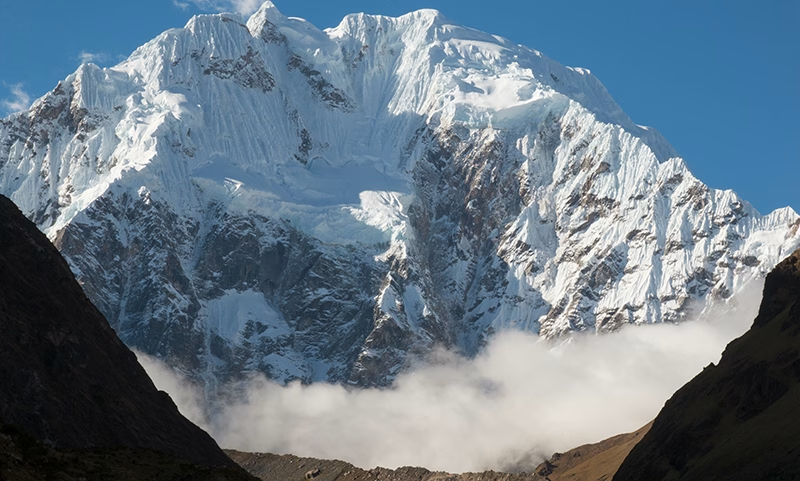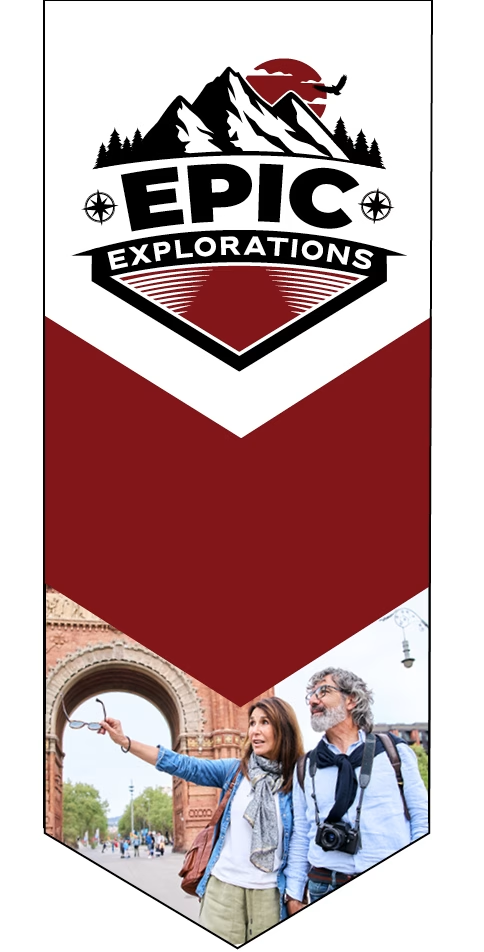Conquering the Widowmaker of the Andes
Into the Heart of Aconcagua
There are mountains that call to you with beauty. And then there are mountains like Aconcagua—towering, brooding, and nicknamed with an ominous affection as “The Widowmaker” or “The Mountain of Death.”
Nestled in the Argentinian Andes near the Chilean border, this formidable peak rises to an astounding 22,838 feet (6,961 meters), claiming its place as the highest mountain in the Western Hemisphere and outside of Asia. But beyond its height lies something more—a test of will, grit, and raw human perseverance.
This isn’t Everest’s glitzy cousin. This is a high-altitude juggernaut where oxygen is scarce, the weather is brutal, and overconfidence has proven fatal. Yet, despite—or perhaps because of—its reputation, Aconcagua is an irresistible draw for climbers and adventure seekers across the globe.
Why Aconcagua Is Called the Widowmaker
The nickname “Widowmaker” isn’t just some marketing gimmick for thrill-seekers. Aconcagua has tragically earned its title. While technically a non-technical climb (meaning no ropes or ice axes required on the Normal Route), the mountain’s extreme altitude, sudden weather shifts, and wind gusts over 80 mph have turned what many assume to be a “walk-up” into a punishing battle for breath.
Altitude sickness, cerebral and pulmonary edema, hypothermia, and disorientation are the most common culprits behind rescues and fatalities. Each year, an average of three to five climbers lose their lives attempting the summit—many having underestimated the silent killer that is elevation.
If Everest is the glamorous queen of the peaks, Aconcagua is the unpredictable siren—beautiful, but merciless.
The Majesty of the Andes—Location & Geography
Located in the Mendoza Province of Argentina, Aconcagua stands watch over the Andes like a sentinel. It’s part of the Principal Cordillera, just 70 miles from the city of Mendoza and a short hop from the Chilean border. Its name is believed to derive from the Quechua word Ackon Cahuak, meaning “Stone Sentinel.”
The terrain surrounding Aconcagua is otherworldly: glaciers drape its flanks, desert-like valleys contrast against snowcapped peaks, and at higher altitudes, the air thins into a ghostly quiet that humbles even the most seasoned mountaineers.
Aconcagua’s massive size creates its own weather system, making forecasts almost futile. Clear skies can collapse into whiteout conditions in minutes. The Polish Glacier route offers more challenge, while the Normal Route is most commonly used for guided expeditions.
Routes to the Roof of the Americas
The Normal Route – Not So Normal
-
Considered the “easiest” way up Aconcagua, but that’s relative.
-
Requires no technical climbing gear.
-
Takes 15–20 days round-trip, allowing time for acclimatization.
-
Still incredibly dangerous due to altitude, freezing temps, and unpredictability.
Polish Glacier Route – The Icy Gauntlet
-
Demands advanced mountaineering skills.
-
Includes ice and snow climbing.
-
Riskier, but far less crowded.
-
The views? Unreal.
360 Traverse – The Connoisseur’s Route
-
A scenic, less traveled path that circles the mountain.
-
Combines the Vacas and Horcones valleys.
-
Longer but provides better acclimatization.
Dangers of the Mountain of Death
Climbing Aconcagua isn’t about gear and guts alone. It’s a chess game with nature.
-
Hypoxia: The lack of oxygen at extreme altitudes turns each breath into a battle.
-
Weather: Wind chill can plunge below –30°C (–22°F).
-
Altitude Illness: AMS, HAPE, and HACE are real threats, even to the fittest adventurers.
-
Isolation: Evacuation isn’t easy. Helicopters are limited and expensive.
-
Overestimation: Many climbers underestimate Aconcagua’s dangers, emboldened by the lack of technical climbing.
Let me be blunt: More people are evacuated off Aconcagua than summit it. Don’t let the “non-technical” label fool you. This isn’t a hike. It’s a full-blown expedition.
Gateway to Aconcagua – Mendoza, Argentina
Before the ascent begins, all roads lead through Mendoza, the charming Argentinian city known for its Malbec wines, warm hospitality, and vibrant plazas. Here’s where climbers gear up, hire guides, and fuel up on empanadas, beef, and local vino before venturing into the wild.
Epic Explorations works with local outfitters to ensure proper acclimatization days are built in. Mendoza also serves as the final decompression zone post-expedition, offering hot springs, spas, and plenty of celebratory toasts.
Epic Explorations & Aconcagua – Curating the Climb of a Lifetime
This isn’t your average trek. When you experience Aconcagua with Epic Explorations, we treat it like the high-altitude odyssey it is—fully curated, meticulously planned, and personally guided.
From:
-
Luxury pre-climb lodging in Mendoza
-
To nutrition-focused base camp cuisine
-
To private medical checks and altitude acclimatization guides
We believe safety and splendor should go hand in hand.
And if you’re not the summit-seeking type? We offer scenic heli tours, guided hikes to base camp, and cultural immersion in Mendoza for those who prefer the view without the vertical.
When to Climb Aconcagua
The best window is from mid-November to March, the Southern Hemisphere’s summer. Even then, weather windows are tight. Booking early with Epic Explorations ensures prime logistics, the best guides, and pre-arrival planning for success.
Essential Gear for the Climb
If Aconcagua is on your radar, pack wisely. Here’s your base gear checklist:
-
Four-season mountaineering tent
-
-20°F (-29°C) sleeping bag
-
High-altitude boots
-
Trekking poles
-
Satellite phone or GPS
-
Insulated water bottles
-
Pulse oximeter
Let us help you build out your pack. We partner with outfitters who provide gear rental, porter service, and logistical support from ground to summit.
Who Should Attempt Aconcagua?
This isn’t a beginner’s mountain. We recommend you’ve already tackled Kilimanjaro, Denali base camp, or the Alps’ higher ridgelines. Strong physical conditioning is required, and mental toughness is a must. You don’t climb Aconcagua—you negotiate with it.
Not Just the Summit—The Spiritual Summit
Climbing Aconcagua isn’t just about reaching the top. It’s about confronting your own limits. Up there, ego strips away, and what remains is clarity.
The summit is silent. Just the wind and your heartbeat.
And it hits you: you’re not conquering the mountain—you’re discovering yourself.
Final Thoughts from the Thin Air
Aconcagua is more than a peak. It’s a pilgrimage for those craving something deeper than adrenaline. Whether you summit or stand in awe at base camp, you’ll leave changed.
At Epic Explorations, we don’t just book you a climb—we curate your confrontation with greatness. Because in the thin air of Aconcagua, what you find isn’t just a view—it’s perspective.
Ready to meet the Widowmaker?
Contact Epic Explorations and let’s craft your Andean ascent.
Susana Balbo Winemaker’s House & Spa

Explore Your World Epically
Robert Riesmeyer is the visionary Founder and Experience Curator of Epic Explorations, a boutique travel company dedicated to crafting extraordinary journeys worldwide. Rooted in a passion for exploration, Robert brings a unique blend of creativity and commitment to every adventure, ensuring each experience is as unforgettable as the destinations themselves.
Originally from the Midwest, Robert left behind a career in insurance to pursue his dream of sharing the world's wonders with fellow travelers. With a focus on safety and an eye for the unexpected, he curates immersive experiences that allow travelers to connect deeply with the world, fostering curiosity, connection, and unforgettable memories.
Beyond his role in travel, Robert embraces the spirit of giving through his portrayal of Santa Claus, spreading joy to families and children during the holiday season. Through this role and Epic Explorations, he supports numerous charities, including Shadow Buddies, Mother's Refuge, Moving Ahead, Opertion Breakthrough and Santa America, bringing kindness and hope to those in need.
Based in Kansas City, Robert is constantly in search of new frontiers, dreaming big, giving back, and inspiring others to explore even bigger.


